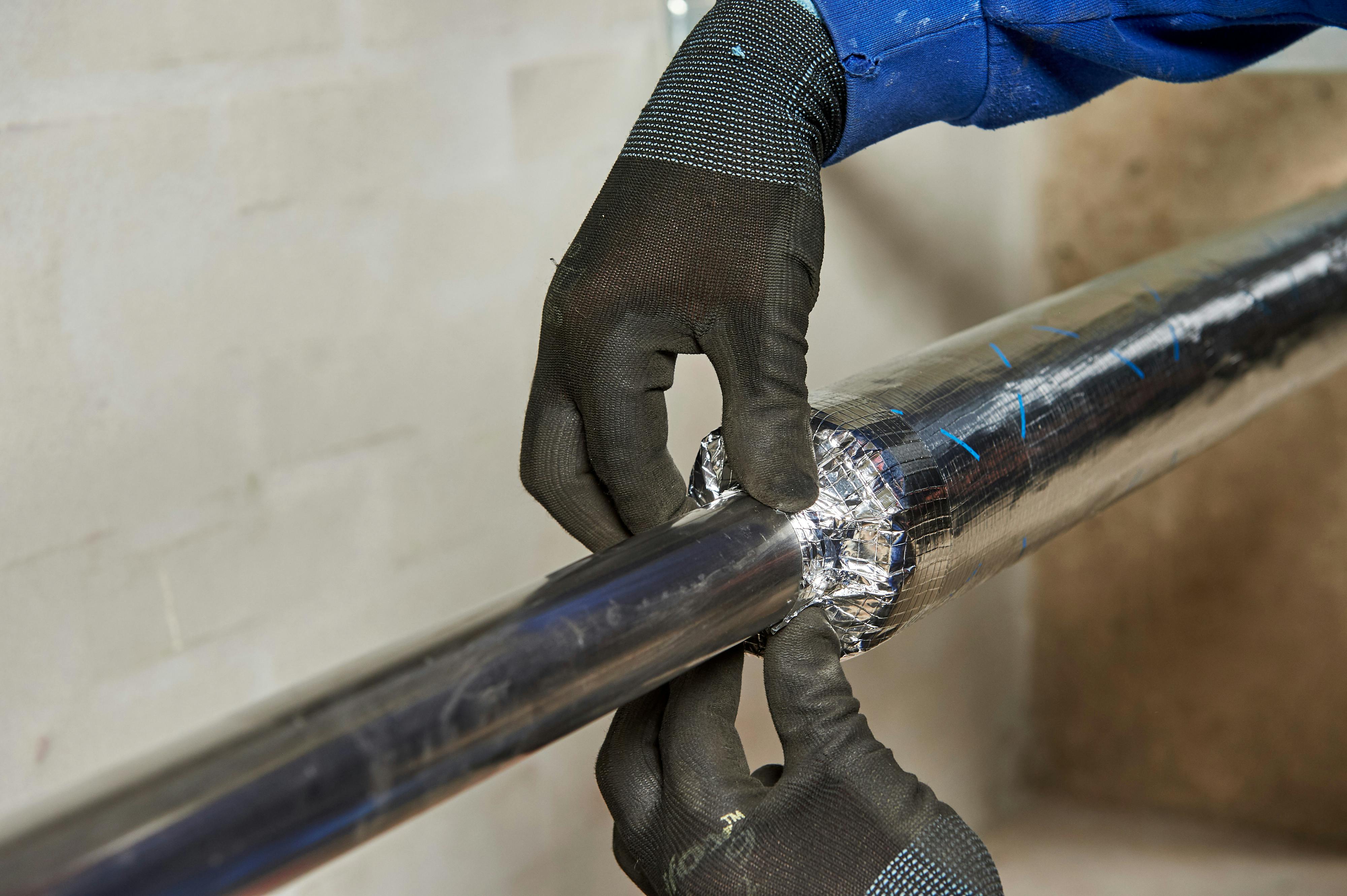

HVAC pipe insulation improves the operating efficiency of heating and cooling units to keep temperatures comfortable with minimum energy usage.

Heating and cooling buildings accounts for around half of all energy consumption1. Reducing the required energy demand can cut both operating costs and carbon emissions for many large constructions – such as airports, apartment blocks, warehouses and schools.
HVAC pipe insulation improves the operating efficiency of heating and cooling units to keep temperatures comfortable with minimum energy usage.
The fire resilience properties of our stone wool insulation are also important – especially for hot pipes – as they can run throughout a building at high temperatures.
Acoustic absorption also limits the impact from sometimes-noisy pipes and HVAC systems on building occupants, minimising daily disruption.
Applying insulation for cold pipes can lead to energy savings of up to 50 percent, while insulation for hot piping can result in energy savings up to 20 percent2. There can be differences between countries, but in general pipe insulation can create a return on investment within three years.
Our aluminium faced and aluminium laminate faced piping products are designed for hot and cold sections respectively. Both are available at a medium density (up to 100kg/m3).
Insulation thickness is determined by the:
Use our ROCKWOOL U-value calculator to determine the thermal performance of the building’s walls/roofs, and possible cost savings. For more details on technical specification, visit our ROCKSPEC Specification Toolkit

Our stone wool pipe insulation material does not drop in performance levels over time.
We deliver a full range of solutions at all required thicknesses and dimensions, for both hot and cold water piping:
Benefits of ROCKWOOL solutions include3:
Amager Bakke is an innovative energy-from-waste plant in Copenhagen, Denmark. It turns waste from around 700,000 households into electricity and heating. It also doubles as a leisure facility (with ski slope and climbing wall), as the builders were so confident of its green credentials.
However, to further reduce its emissions and create a safe working and leisure environment, it required high-performance insulation.
To achieve high energy efficiency levels, while also protecting workers and local residents from any risk of fire, ROCKWOOL insulation was installed around pipes and elsewhere within the facility.
The properties of stone wool are helping the plant achieve its high environmental goals – improving the plant’s thermal efficiency, protecting workers from heat, and enhancing fire protection.

Our products can be installed onto various types of piping, with the thickness based on the temperature range of the operating unit.
Lamella and insulated matts are wrapped around the pipes, with the joints sealed by use of special aluminium tape.
To secure a proper and correct installation, an installation manual is provided (and available online), alongside onsite training and education where relevant.
We can also check during the installation process to make sure your HVAC pipe insulation is applied in the most effective manner.
Key tips5:
We achieve results through the use of stone wool, which means all our pipe products are fully recyclable. They can be removed from a building at the end of its life and used again – providing circularity and preventing landfill6.

Our products can be installed without the use of toxic adhesives or other chemical components.
As large buildings require a lot of energy to run and create a comfortable living or working environment, the use of ROCKWOOL solutions can lower energy consumption dramatically.
There may be local schemes and tax incentives available in your country, supporting the use of insulation to boost energy efficiency.

[1] https://ec.europa.eu/energy/studies/mapping-and-analyses-current-and-future-2020-2030-heatingcooling-fuel-deployment_en
[2] https://www.ce.nl/publicaties/download/1730
[3] https://www.rockwoolgroup.com/why-stone-wool/
[4] https://www.rockwoolgroup.com/why-stone-wool/case-studies/case-study-the-copenhill/
[6] https://www.rockwoolgroup.com/why-stone-wool/circularity/